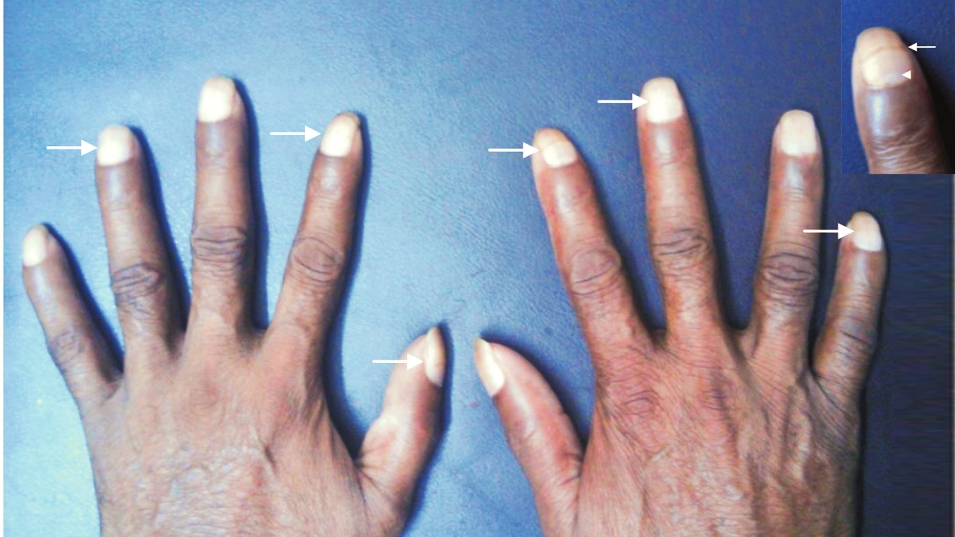Translate this page into:
Beau's lines
*For correspondence: hari_janjam@yahoo.co.in
This is an open-access article distributed under the terms of the Creative Commons Attribution-Noncommercial-Share Alike 3.0 Unported, which permits unrestricted use, distribution, and reproduction in any medium, provided the original work is properly cited.
This article was originally published by Medknow Publications & Media Pvt Ltd and was migrated to Scientific Scholar after the change of Publisher.
A 40-year old male patient presented with fever, pain in the right hypochondrium and progressive breathlessness of 10 days duration to the Outpatient Services of Department of Medicine at Sri Venkateswara Institute of Medical Sciences, Tirupati, India, in November 2011. He was diagnosed to have right-sided empyema thoracis and pyopericardium secondary to rupture of amoebic liver abscess, and was admitted and treated with i.v. metronidazole, percutaneous drainage and mechanical ventilatory support. The patient recovered and was discharged. On follow up after three months, transverse deep grooves were noticed in the nail plate that ran parallel to the lunula in all the digits of the hand (Fig.). Named after Joseph Honoré Simon Beau (1806-1865), Beau's lines occur due to temporary cessation of proliferation of proximal nail matrix. As the finger nail grows at the rate of 0.1 mm/day, the time course of the illness can be estimated from the position of the Beau's line from proximal nail fold. The conditions where Beau's lines have been described include severe systemic illness like the present case, chemotherapy, malnutrition, zinc deficiency, trauma, paronychia, pemphigus, and Kawasaki disease.

- Clinical photograph showing transverse grooves (Beau's lines) on nail plates of all digits (arrows) at similar distances from nail fold. Inset: Close-up view of Beau's line (arrow) on right index finger parallel to lunula (arrow head).





